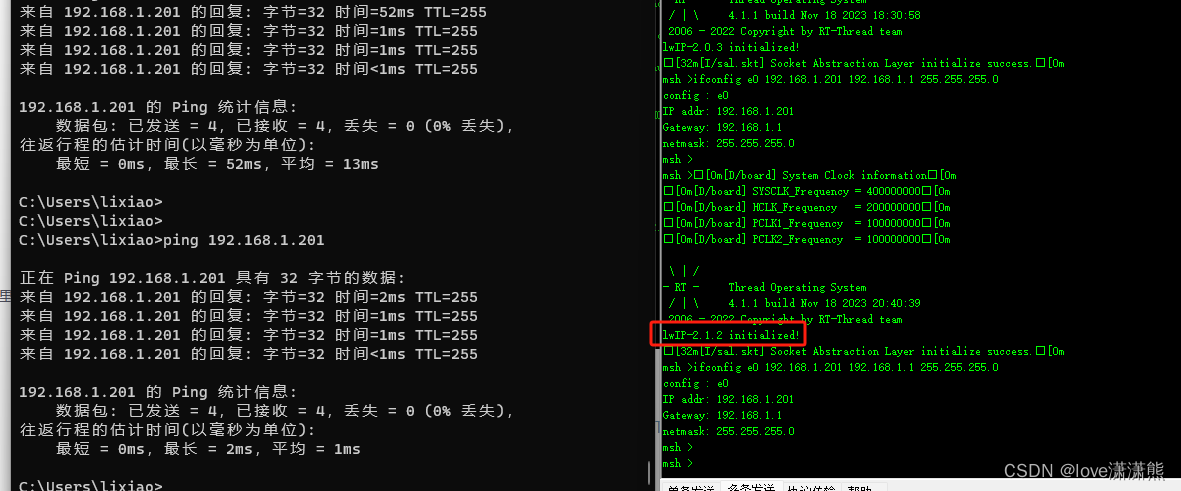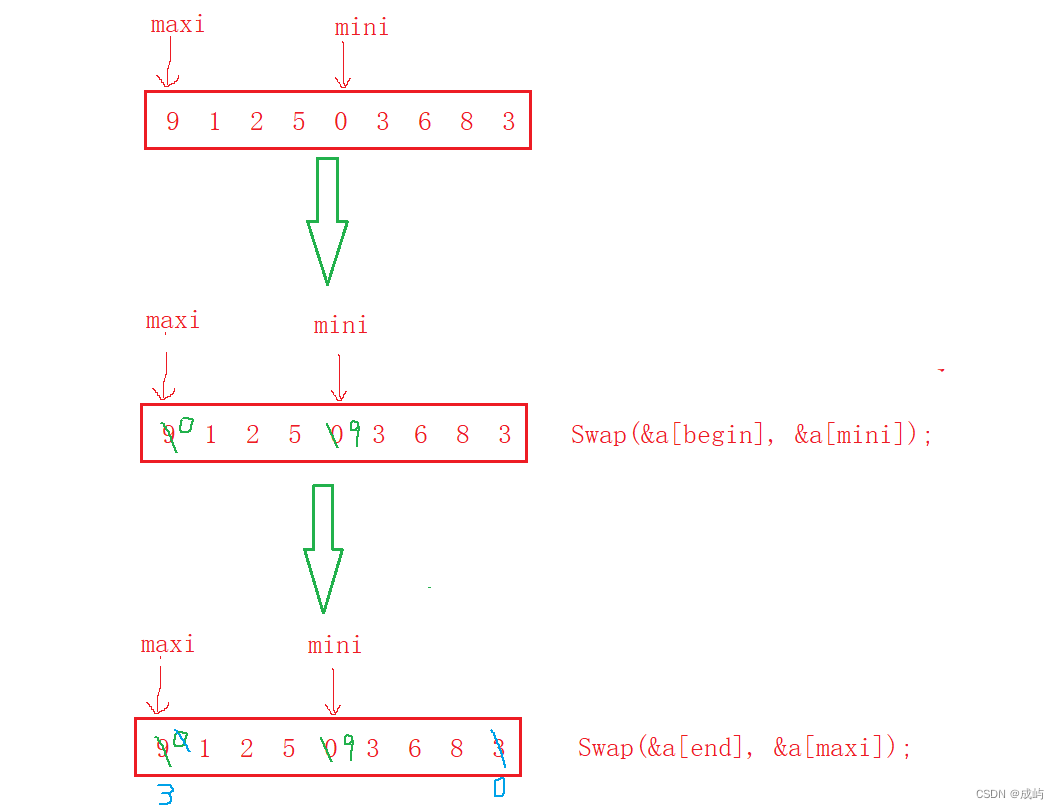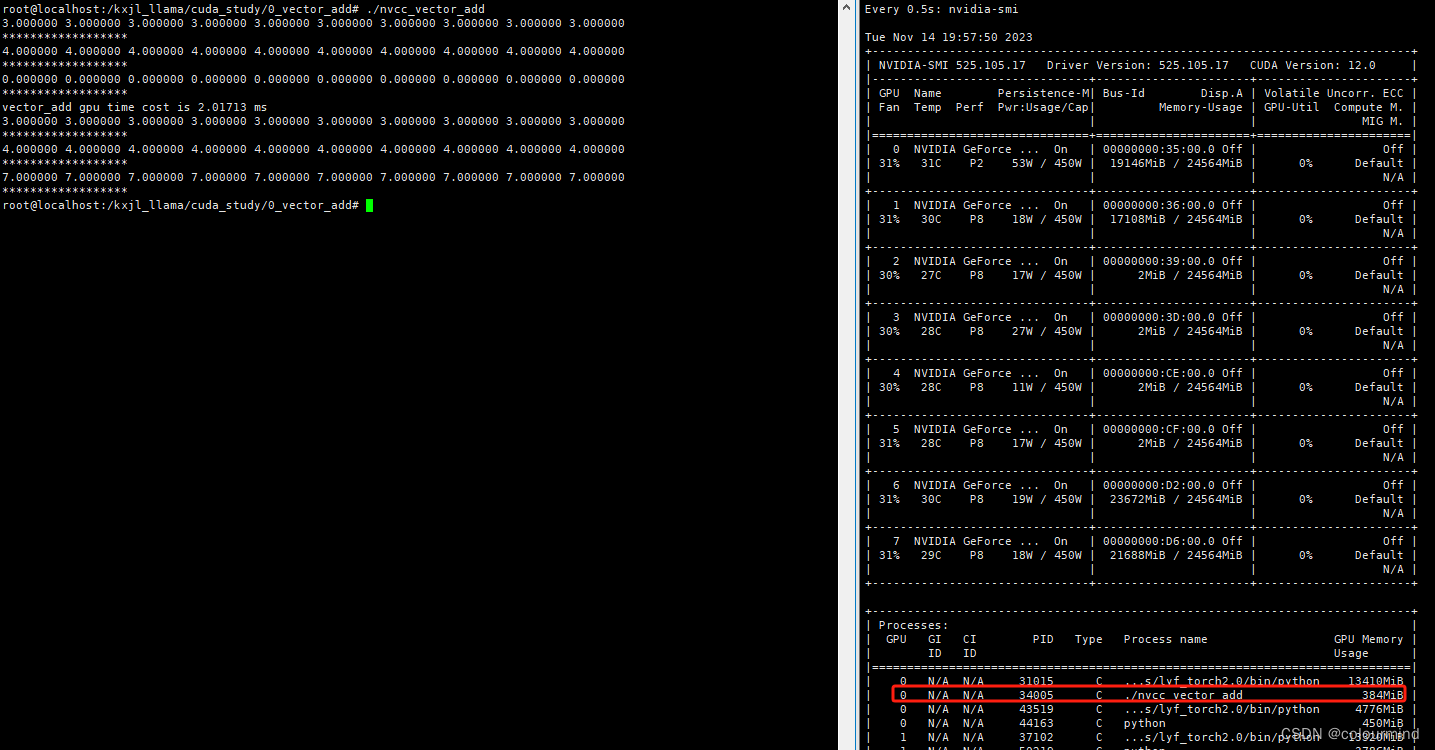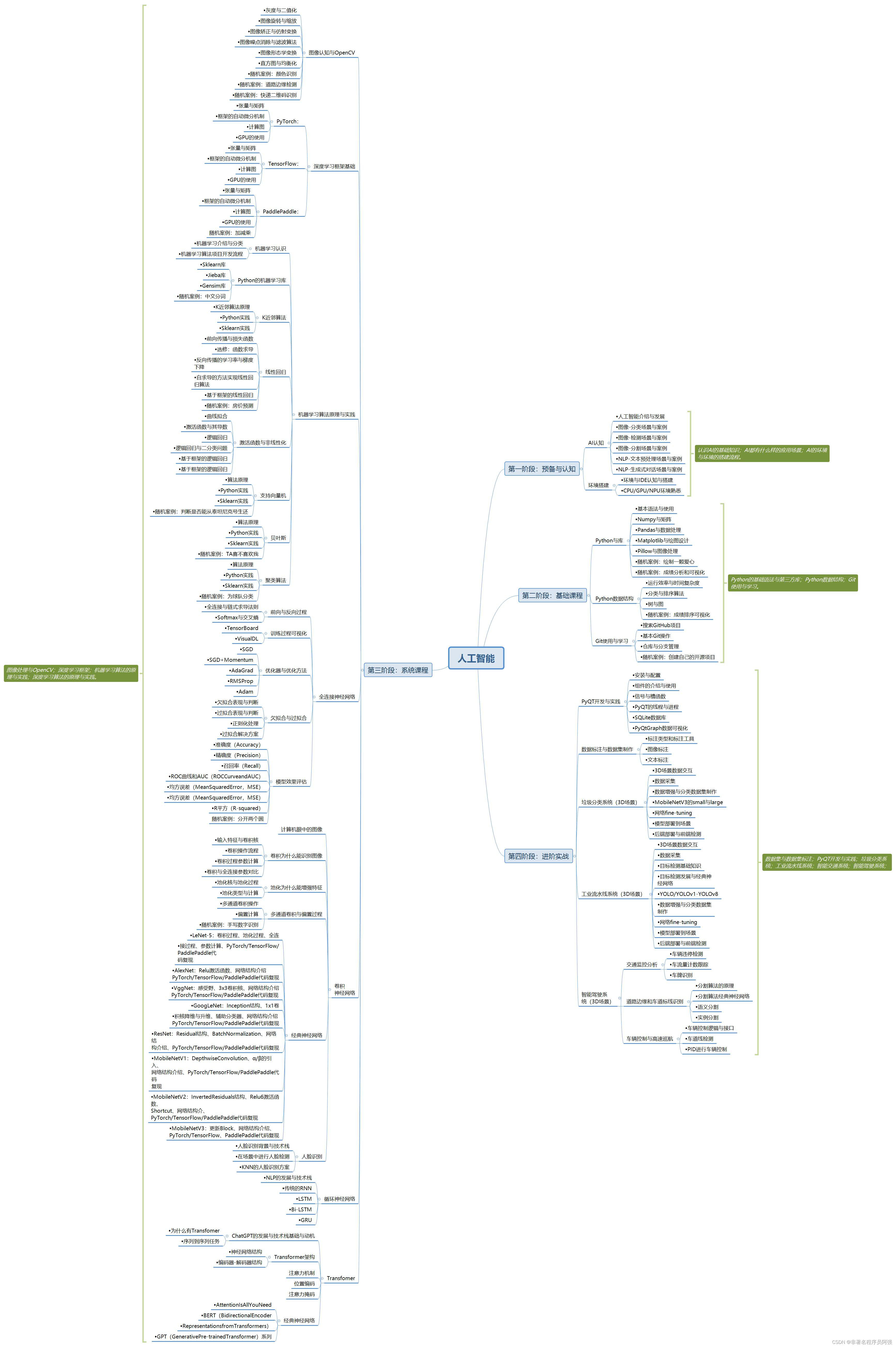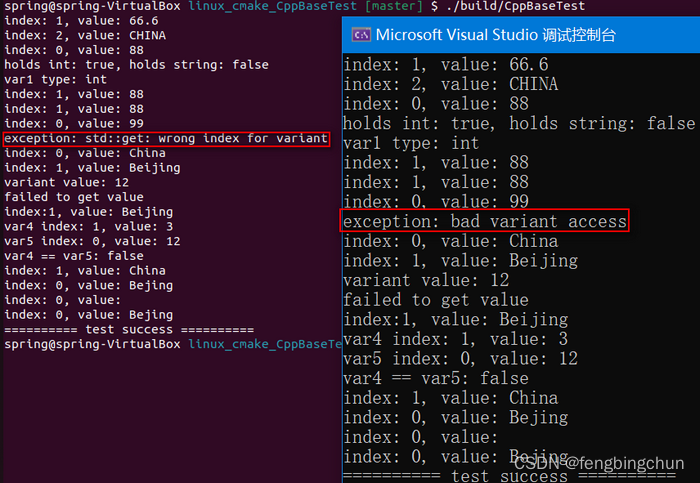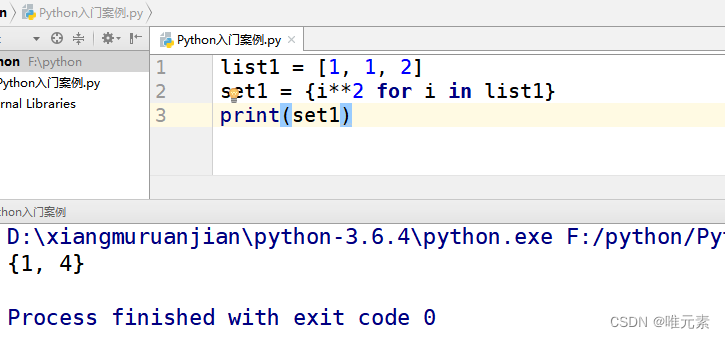- 👏作者简介:大家好,我是爱吃芝士的土豆倪,24届校招生Java选手,很高兴认识大家
- 📕系列专栏:Spring源码、JUC源码
- 🔥如果感觉博主的文章还不错的话,请👍三连支持👍一下博主哦
- 🍂博主正在努力完成2023计划中:源码溯源,一探究竟
- 📝联系方式:nhs19990716,加我进群,大家一起学习,一起进步,一起对抗互联网寒冬👀
文章目录
- 线程安全集合类概述
- ConcurrentHashMap
- ConcurrentHashMap 原理
- JDK 7 HashMap 并发死链
- 死链复现
- 源码分析
- 小结
- JDK 8 ConcurrentHashMap
- 重要方法
- 构造器分析
- get 流程
- put 流程
- size 计算流程
- transfer
- JDK 7 ConcurrentHashMap
- 构造器分析
- put 流程
- rehash 流程
- get 流程
- size 计算流程
- BlockingQueue
- LinkedBlockingQueue 原理
- 基本的入队出队
- 加锁分析
- CopyOnWriteArrayList
- 迭代器弱一致性
线程安全集合类概述

线程安全集合类可以分为三大类:
- 遗留的线程安全集合如 Hashtable , Vector (出现时间比较早,而且所有方法都是用synchronized修饰,并发性能比较低,时至今日有更好的实现,更好的替代)
- 使用 Collections 装饰的线程安全集合,如:(将原本不安全的集合变成安全的集合)
- Collections.synchronizedCollection
- Collections.synchronizedList
- Collections.synchronizedMap
- Collections.synchronizedSet
- Collections.synchronizedNavigableMap
- Collections.synchronizedNavigableSet
- Collections.synchronizedSortedMap
- Collections.synchronizedSortedSet
private static class SynchronizedMap<K,V>
implements Map<K,V>, Serializable {
private static final long serialVersionUID = 1978198479659022715L;
private final Map<K,V> m; // Backing Map
final Object mutex; // Object on which to synchronize
SynchronizedMap(Map<K,V> m) {
this.m = Objects.requireNonNull(m);
mutex = this;
}
public int size() {
synchronized (mutex) {return m.size();}
}
public boolean isEmpty() {
synchronized (mutex) {return m.isEmpty();}
}
public boolean containsKey(Object key) {
synchronized (mutex) {return m.containsKey(key);}
}
public boolean containsValue(Object value) {
synchronized (mutex) {return m.containsValue(value);}
}
public V get(Object key) {
synchronized (mutex) {return m.get(key);}
}
public V put(K key, V value) {
synchronized (mutex) {return m.put(key, value);}
}
public V remove(Object key) {
synchronized (mutex) {return m.remove(key);}
}
public void putAll(Map<? extends K, ? extends V> map) {
synchronized (mutex) {m.putAll(map);}
}
public void clear() {
synchronized (mutex) {m.clear();}
}
传入的就是线程不安全的map,将其变成线程安全的
本质上就是多加了一个synchronized 锁住了对象
- java.util.concurrent.*
重点介绍 java.util.concurrent.* 下的线程安全集合类,可以发现它们有规律,里面包含三类关键词:
Blocking、CopyOnWrite、Concurrent
-
Blocking 大部分实现基于锁,并提供用来阻塞的方法(很多方法在不满足条件的时候需要等待)
-
CopyOnWrite 之类容器修改开销相对较重(适用于读多写少)
-
Concurrent 类型的容器
内部很多操作使用 cas 优化,一般可以提供较高吞吐量
弱一致性
- 遍历时弱一致性,例如,当利用迭代器遍历时,如果容器发生修改,迭代器仍然可以继续进行遍历,这时内容是旧的
- 求大小弱一致性,size 操作未必是 100% 准确
- 读取弱一致性
遍历时如果发生了修改,对于非安全容器来讲,使用 fail-fast 机制也就是让遍历立刻失败,抛出ConcurrentModificationException,不再继续遍历
一致性 和 性能 两者不可兼得
ConcurrentHashMap
生成测试数据
static final String ALPHA = "abcedfghijklmnopqrstuvwxyz";
public static void main(String[] args) {
int length = ALPHA.length();
int count = 200;
List<String> list = new ArrayList<>(length * count);
for (int i = 0; i < length; i++) {
char ch = ALPHA.charAt(i);
for (int j = 0; j < count; j++) {
list.add(String.valueOf(ch));
}
}
Collections.shuffle(list);
for (int i = 0; i < 26; i++) {
try (PrintWriter out = new PrintWriter(
new OutputStreamWriter(
new FileOutputStream("tmp/" + (i+1) + ".txt")))) {
String collect = list.subList(i * count, (i + 1) * count).stream()
.collect(Collectors.joining("\n"));
out.print(collect);
} catch (IOException e) {
}
}
}
模版代码,模版代码中封装了多线程读取文件的代码
private static <V> void demo(Supplier<Map<String,V>> supplier,
BiConsumer<Map<String,V>,List<String>> consumer) {
Map<String, V> counterMap = supplier.get();
List<Thread> ts = new ArrayList<>();
for (int i = 1; i <= 26; i++) {
int idx = i;
Thread thread = new Thread(() -> {
List<String> words = readFromFile(idx);
consumer.accept(counterMap, words);
});
ts.add(thread);
}
ts.forEach(t->t.start());
ts.forEach(t-> {
try {
t.join();
} catch (InterruptedException e) {
e.printStackTrace();
}
});
System.out.println(counterMap);
}
public static List<String> readFromFile(int i) {
ArrayList<String> words = new ArrayList<>();
try (BufferedReader in = new BufferedReader(new InputStreamReader(new FileInputStream("tmp/"
+ i +".txt")))) {
while(true) {
String word = in.readLine();
if(word == null) {
break;
}
words.add(word);
}
return words;
} catch (IOException e) {
throw new RuntimeException(e);
}
}
你要做的是实现两个参数
- 一是提供一个 map 集合,用来存放每个单词的计数结果,key 为单词,value 为计数
- 二是提供一组操作,保证计数的安全性,会传递 map 集合以及 单词 List
正确结果输出应该是每个单词出现 200 次
{a=200, b=200, c=200, d=200, e=200, f=200, g=200, h=200, i=200, j=200, k=200, l=200, m=200,
n=200, o=200, p=200, q=200, r=200, s=200, t=200, u=200, v=200, w=200, x=200, y=200, z=200}
下面的实现为:
demo(
// 创建 map 集合
// 创建 ConcurrentHashMap 对不对?
() -> new HashMap<String, Integer>(),
// 进行计数
(map, words) -> {
for (String word : words) {
Integer counter = map.get(word);
int newValue = counter == null ? 1 : counter + 1;
map.put(word, newValue);
}
});
结果和预期的并不一样
将HashMap 换成 ConcurrentHashMap,发现还是不行!
如果将其改成了ConcurrentHashMap的话,那么其实下面的几行也不是原子的,因为使用了线程安全的集合,只能保证,每行是原子的,但是整体不是
或者加上 synchronized 锁。但是这样做没有好处,ConcurrentHashMap本身加的就是细粒度的锁,你使用synchronized 这么重的锁,影响性能,影响并发度。
ConcurrentHashMap 原理
JDK 7 HashMap 并发死链
注意
要在 JDK 7 下运行,否则扩容机制和 hash 的计算方法都变了
以下测试代码是精心准备的,不要随便改动
public static void main(String[] args) {
// 测试 java 7 中哪些数字的 hash 结果相等
System.out.println("长度为16时,桶下标为1的key");
for (int i = 0; i < 64; i++) {
if (hash(i) % 16 == 1) {
System.out.println(i);
}
}
System.out.println("长度为32时,桶下标为1的key");
for (int i = 0; i < 64; i++) {
if (hash(i) % 32 == 1) {
System.out.println(i);
}
}
// 1, 35, 16, 50 当大小为16时,它们在一个桶内
final HashMap<Integer, Integer> map = new HashMap<Integer, Integer>();
// 放 12 个元素
map.put(2, null);
map.put(3, null);
map.put(4, null);
map.put(5, null);
map.put(6, null);
map.put(7, null);
map.put(8, null);
map.put(9, null);
map.put(10, null);
map.put(16, null);
map.put(35, null);
map.put(1, null);
System.out.println("扩容前大小[main]:"+map.size());
new Thread() {
@Override
public void run() {
// 放第 13 个元素, 发生扩容
map.put(50, null);
System.out.println("扩容后大小[Thread-0]:"+map.size());
}
}.start();
new Thread() {
@Override
public void run() {
// 放第 13 个元素, 发生扩容
map.put(50, null);
System.out.println("扩容后大小[Thread-1]:"+map.size());
}
}.start();
}
final static int hash(Object k) {
int h = 0;
if (0 != h && k instanceof String) {
return sun.misc.Hashing.stringHash32((String) k);
}
h ^= k.hashCode();
h ^= (h >>> 20) ^ (h >>> 12);
return h ^ (h >>> 7) ^ (h >>> 4);
}
死链复现
调试工具使用 idea
在 HashMap 源码 590 行加断点

int newCapacity = newTable.length;
断点的条件如下,目的是让 HashMap 在扩容为 32 时,并且线程为 Thread-0 或 Thread-1 时停下来
newTable.length==32 &&
(
Thread.currentThread().getName().equals("Thread-0")||
Thread.currentThread().getName().equals("Thread-1")
)
断点暂停方式选择 Thread,否则在调试 Thread-0 时,Thread-1 无法恢复运行
运行代码,程序在预料的断点位置停了下来,输出
长度为16时,桶下标为1的key
1
16
35
50
长度为32时,桶下标为1的key
1
35
扩容前大小[main]:12


在jdk7 中,hashmap是采用头插法插入的
接下来进入扩容流程调试
在 HashMap 源码 594 行加断点
Entry<K,V> next = e.next; // 593
if (rehash) // 594
// ...
这是为了观察 e 节点和 next 节点的状态,Thread-0 单步执行到 594 行,再 594 处再添加一个断点(条件
Thread.currentThread().getName().equals(“Thread-0”))
这时可以在 Variables 面板观察到 e 和 next 变量,使用 view as -> Object 查看节点状态
e (1)->(35)->(16)->null
next (35)->(16)->null
在 Threads 面板选中 Thread-1 恢复运行,可以看到控制台输出新的内容如下,Thread-1 扩容已完成
newTable[1] (35)->(1)->null
扩容后大小:13
这时 Thread-0 还停在 594 处, Variables 面板变量的状态已经变化为
e (1)->null
next (35)->(1)->null
为什么呢,因为 Thread-1 扩容时链表也是后加入的元素放入链表头,因此链表就倒过来了,但 Thread-1 虽然结
果正确,但它结束后 Thread-0 还要继续运行
接下来就可以单步调试(F8)观察死链的产生了
下一轮循环到 594,将 e 搬迁到 newTable 链表头
newTable[1] (1)->null
e (35)->(1)->null
next (1)->null
下一轮循环到 594,将 e 搬迁到 newTable 链表头
newTable[1] (35)->(1)->null
e (1)->null
next null
再看看源码
e.next = newTable[1];
// 这时 e (1,35)
// 而 newTable[1] (35,1)->(1,35) 因为是同一个对象
// 相当于 1 -> 35 -> 1
newTable[1] = e;
// 再尝试将 e 作为链表头, 死链已成
e = next;
// 虽然 next 是 null, 会进入下一个链表的复制, 但死链已经形成了
源码分析
HashMap 的并发死链发生在扩容时
void transfer(Entry[] newTable, boolean rehash) {
int newCapacity = newTable.length;
for (Entry<K,V> e : table) {
while(null != e) {
Entry<K,V> next = e.next;
// 1 处
if (rehash) {
e.hash = null == e.key ? 0 : hash(e.key);
}
int i = indexFor(e.hash, newCapacity);
// 2 处
// 将新元素加入 newTable[i], 原 newTable[i] 作为新元素的 next
e.next = newTable[i];
newTable[i] = e;
e = next;
}
}
}
假设 map 中初始元素是
原始链表,格式:[下标] (key,next)
[1] (1,35)->(35,16)->(16,null)
线程 a 执行到 1 处 ,此时局部变量 e 为 (1,35),而局部变量 next 为 (35,16) 线程 a 挂起
线程 b 开始执行
第一次循环
[1] (1,null)
第二次循环
[1] (35,1)->(1,null)
第三次循环
[1] (35,1)->(1,null)
[17] (16,null)
切换回线程 a,此时局部变量 e 和 next 被恢复,引用没变但内容变了:e 的内容被改为 (1,null),而 next 的内
容被改为 (35,1) 并链向 (1,null)
第一次循环
[1] (1,null)
第二次循环,注意这时 e 是 (35,1) 并链向 (1,null) 所以 next 又是 (1,null)
[1] (35,1)->(1,null)
第三次循环,e 是 (1,null),而 next 是 null,但 e 被放入链表头,这样 e.next 变成了 35 (2 处)
[1] (1,35)->(35,1)->(1,35)
已经是死链了
小结
- 究其原因,是因为在多线程环境下使用了非线程安全的 map 集合
- JDK 8 虽然将扩容算法做了调整,不再将元素加入链表头(而是保持与扩容前一样的顺序),但仍不意味着能
够在多线程环境下能够安全扩容,还会出现其它问题(如扩容丢数据)
JDK 8 ConcurrentHashMap
// 默认为 0
// 当初始化时, 为 -1
// 当扩容时, 为 -(1 + 扩容线程数)
// 当初始化或扩容完成后,为 下一次的扩容的阈值大小
private transient volatile int sizeCtl;
// 整个 ConcurrentHashMap 就是一个 Node[]
static class Node<K,V> implements Map.Entry<K,V> {}
// hash 表
transient volatile Node<K,V>[] table;
// 扩容时的 新 hash 表
private transient volatile Node<K,V>[] nextTable;
// 扩容时如果某个 bin 迁移完毕, 用 ForwardingNode 作为旧 table bin 的头结点
// 主要用在扩容的时候
static final class ForwardingNode<K,V> extends Node<K,V> {}
// 用在 compute 以及 computeIfAbsent 时, 用来占位, 计算完成后替换为普通 Node
static final class ReservationNode<K,V> extends Node<K,V> {}
// 作为 treebin 的头节点, 存储 root 和 first
// 红黑树节点
static final class TreeBin<K,V> extends Node<K,V> {}
// 作为 treebin 的节点, 存储 parent, left, right
static final class TreeNode<K,V> extends Node<K,V> {}
ForwardingNode 这个是从后往前处理,处理完了就会在对应的下标 加一个头结点 fnode

如果扩容过程中,去get,如果是fnode的,那么就会去新数组中去获取
转换红黑树,当链表长度超过8的时候,会考虑转换,但是要满足一个前提就是 数组长度超过64,否则只会执行扩容操作。因为扩容能够有效的减少链表的长度。
重要方法
// 获取 Node[] 中第 i 个 Node
static final <K,V> Node<K,V> tabAt(Node<K,V>[] tab, int i)
// cas 修改 Node[] 中第 i 个 Node 的值, c 为旧值, v 为新值
static final <K,V> boolean casTabAt(Node<K,V>[] tab, int i, Node<K,V> c, Node<K,V> v)
// 直接修改 Node[] 中第 i 个 Node 的值, v 为新值
static final <K,V> void setTabAt(Node<K,V>[] tab, int i, Node<K,V> v)
构造器分析
可以看到实现了懒惰初始化,在构造方法中仅仅计算了 table 的大小,以后在第一次使用时才会真正创建
// 初始容量 负载因子 并发度
public ConcurrentHashMap(int initialCapacity, float loadFactor, int concurrencyLevel) {
if (!(loadFactor > 0.0f) || initialCapacity < 0 || concurrencyLevel <= 0)
throw new IllegalArgumentException();
// 如果初始容量小于并发度的时候 将初始容量改成 并发度,也就是最起码要保持到并发度这么大
if (initialCapacity < concurrencyLevel) // Use at least as many bins
initialCapacity = concurrencyLevel; // as estimated threads
long size = (long)(1.0 + (long)initialCapacity / loadFactor);
// tableSizeFor 仍然是保证计算的大小是 2^n, 即 16,32,64 ...
int cap = (size >= (long)MAXIMUM_CAPACITY) ?
MAXIMUM_CAPACITY : tableSizeFor((int)size);
this.sizeCtl = cap;
// 1.8中实现了懒惰初始化,而1.7中会在构造方法中创建了,不管你用不用,都会占用内存空间。
}
get 流程
可以看到,整个get中没有任何的锁,所以这也是并发度高的一个地方
public V get(Object key) {
Node<K,V>[] tab; Node<K,V> e, p; int n, eh; K ek;
// spread 方法能确保返回结果是正数
int h = spread(key.hashCode());
// tab创建好了并且里面是有元素的
if ((tab = table) != null && (n = tab.length) > 0 &&
(e = tabAt(tab, (n - 1) & h)) != null) {
// 获取 Node[] 中第 i 个 Node 定位到桶下标,看看是不是为空,如果不为空?继续比较头节点的hash码是不是等于key的hash码
// 如果头结点已经是要查找的 key
if ((eh = e.hash) == h) {
if ((ek = e.key) == key || (ek != null && key.equals(ek)))
return e.val;
}
// hash 为负数表示该 bin 在扩容中或是 treebin, 这时调用 find 方法来查找
// 扩容中会变成 fnode 对应的取值就是负数
else if (eh < 0)
return (p = e.find(h, key)) != null ? p.val : null;
// 正常遍历链表, 用 equals 比较
while ((e = e.next) != null) {
if (e.hash == h &&
((ek = e.key) == key || (ek != null && key.equals(ek))))
return e.val;
}
}
return null;
}
put 流程
以下数组简称(table),链表简称(bin)
public V put(K key, V value) {
return putVal(key, value, false);
// onlyIfAbsent如果是false,那么每次都会用新值替换掉旧值
}
final V putVal(K key, V value, boolean onlyIfAbsent) {
if (key == null || value == null) throw new NullPointerException();
// 其中 spread 方法会综合高位低位, 具有更好的 hash 性
int hash = spread(key.hashCode());
int binCount = 0;
// 死循环
for (Node<K,V>[] tab = table;;) {
// f 是链表头节点
// fh 是链表头结点的 hash
// i 是链表在 table 中的下标
Node<K,V> f; int n, i, fh;
// 要创建 table
if (tab == null || (n = tab.length) == 0)
// 初始化 table 使用了 cas, 无需 synchronized 创建成功, 进入下一轮循环
// 因为是懒惰初始化的,所以直到现在才开始创建 初始化使用cas 创建,其它失败得再次进入循环,没有用syn 我们得线程并没有被阻塞住
tab = initTable();
// 要创建链表头节点
else if ((f = tabAt(tab, i = (n - 1) & hash)) == null) {
// 添加链表头使用了 cas, 无需 synchronized
// 用cas将头节点加进去,如果加入失败了,继续循环
if (casTabAt(tab, i, null,
new Node<K,V>(hash, key, value, null)))
break;
}
// 帮忙扩容
// 其实就是看你的头结点是不是 ForwardingNode,其对应得MOVED是一个负数
else if ((fh = f.hash) == MOVED)
// 帮忙之后, 进入下一轮循环
// 锁住当前的链表,帮助去扩容
tab = helpTransfer(tab, f);
// 能进入这个else,说明 table既不处于扩容中,也不是处于table的初始化过程中,而且这时肯定发生了锁下标的冲突
else {
V oldVal = null;
// 锁住链表头节点
// 并没有锁住整个tab,而是锁住这个桶链表的头节点
synchronized (f) {
// 再次确认链表头节点没有被移动
if (tabAt(tab, i) == f) {
// 链表
// 链表的头节点hash码大于等于 0
if (fh >= 0) {
binCount = 1;
// 遍历链表
for (Node<K,V> e = f;; ++binCount) {
K ek;
// 找到相同的 key
if (e.hash == hash &&
((ek = e.key) == key ||
(ek != null && key.equals(ek)))) {
oldVal = e.val;
// 更新
if (!onlyIfAbsent)
e.val = value;
break;
}
Node<K,V> pred = e;
// 已经是最后的节点了, 新增 Node, 追加至链表尾
if ((e = e.next) == null) {
pred.next = new Node<K,V>(hash, key,
value, null);
break;
}
}
}
// 红黑树
else if (f instanceof TreeBin) {
Node<K,V> p;
binCount = 2;
// putTreeVal 会看 key 是否已经在树中, 是, 则返回对应的 TreeNode
if ((p = ((TreeBin<K,V>)f).putTreeVal(hash, key,
value)) != null) {
oldVal = p.val;
if (!onlyIfAbsent)
p.val = value;
}
}
}
// 释放链表头节点的锁
}
if (binCount != 0) {
if (binCount >= TREEIFY_THRESHOLD)
// 如果链表长度 >= 树化阈值(8), 进行链表转为红黑树
treeifyBin(tab, i);
if (oldVal != null)
return oldVal;
break;
}
}
}
// 增加 size 计数
addCount(1L, binCount);
return null;
}
private final Node<K,V>[] initTable() {
Node<K,V>[] tab; int sc;
// 这个hash有没有被创建
while ((tab = table) == null || tab.length == 0) {
if ((sc = sizeCtl) < 0)
// 让出cpu的使用权,如果cpu的时间片没有其它线程了,那么还是会分给这个线程,只是让他不至于充分利用cpu,少占用一点cpu的时间。
Thread.yield();
// 尝试将 sizeCtl 设置为 -1(表示初始化 table)
// 而其它的线程,再次进入循环,首先 不小于0了,其次,之前的 sc也已经变了,cas失败,再次循环的时候,发现 tab已经不为空了,结束循环
else if (U.compareAndSwapInt(this, SIZECTL, sc, -1)) {
// 获得锁, 创建 table, 这时其它线程会在 while() 循环中 yield 直至 table 创建
try {
if ((tab = table) == null || tab.length == 0) {
int n = (sc > 0) ? sc : DEFAULT_CAPACITY;
Node<K,V>[] nt = (Node<K,V>[])new Node<?,?>[n];
table = tab = nt;
// 计算出下一次要扩容的阈值
sc = n - (n >>> 2);
}
} finally {
// 计算出下一次要扩容的阈值
sizeCtl = sc;
}
break;
}
}
return tab;
}
// check 是之前 binCount 的个数
// 运用了 longadder 的思想
private final void addCount(long x, int check) {
CounterCell[] as; long b, s;
if (
// 已经有了 counterCells, 向 cell 累加
// 累加单元数组不为空
(as = counterCells) != null ||
// 还没有, 向 baseCount 累加
// 一个基础数值累加
!U.compareAndSwapLong(this, BASECOUNT, b = baseCount, s = b + x)
) {
CounterCell a; long v; int m;
boolean uncontended = true;
if (
// 还没有 counterCells
as == null || (m = as.length - 1) < 0 ||
// 还没有 cell
(a = as[ThreadLocalRandom.getProbe() & m]) == null ||
// cell cas 增加计数失败
!(uncontended = U.compareAndSwapLong(a, CELLVALUE, v = a.value, v + x))
) {
// 创建累加单元数组和cell, 累加重试
fullAddCount(x, uncontended);
return;
}
if (check <= 1)
return;
// 获取元素个数
s = sumCount();
}
if (check >= 0) {
Node<K,V>[] tab, nt; int n, sc;
// 看看元素的个数是否大于扩容的阈值
while (s >= (long)(sc = sizeCtl) && (tab = table) != null &&
(n = tab.length) < MAXIMUM_CAPACITY) {
int rs = resizeStamp(n);
if (sc < 0) {
if ((sc >>> RESIZE_STAMP_SHIFT) != rs || sc == rs + 1 ||
sc == rs + MAX_RESIZERS || (nt = nextTable) == null ||
transferIndex <= 0)
break;
// newtable 已经创建了,帮忙扩容
if (U.compareAndSwapInt(this, SIZECTL, sc, sc + 1))
// 首次调用,因为是懒惰初始化的,所以还没有创建
transfer(tab, nt);
}
// 需要扩容,这时 newtable 未创建
else if (U.compareAndSwapInt(this, SIZECTL, sc,
(rs << RESIZE_STAMP_SHIFT) + 2))
transfer(tab, null);
s = sumCount();
}
}
}
size 计算流程
size 计算实际发生在 put,remove 改变集合元素的操作之中
- 没有竞争发生,向 baseCount 累加计数
- 有竞争发生,新建 counterCells,向其中的一个 cell 累加计数
counterCells 初始有两个 cell
如果计数竞争比较激烈,会创建新的 cell 来累加计数
public int size() {
long n = sumCount();
return ((n < 0L) ? 0 :
(n > (long)Integer.MAX_VALUE) ? Integer.MAX_VALUE :
(int)n);
}
final long sumCount() {
CounterCell[] as = counterCells; CounterCell a;
// 将 baseCount 计数与所有 cell 计数累加
long sum = baseCount;
if (as != null) {
for (int i = 0; i < as.length; ++i) {
if ((a = as[i]) != null)
sum += a.value;
}
}
return sum;
}
transfer
private final void transfer(Node<K,V>[] tab, Node<K,V>[] nextTab) {
int n = tab.length, stride;
if ((stride = (NCPU > 1) ? (n >>> 3) / NCPU : n) < MIN_TRANSFER_STRIDE)
stride = MIN_TRANSFER_STRIDE; // subdivide range
if (nextTab == null) { // initiating
try {
@SuppressWarnings("unchecked")
// 将原有的扩容两倍
Node<K,V>[] nt = (Node<K,V>[])new Node<?,?>[n << 1];
nextTab = nt;
} catch (Throwable ex) { // try to cope with OOME
sizeCtl = Integer.MAX_VALUE;
return;
}
nextTable = nextTab;
transferIndex = n;
}
int nextn = nextTab.length;
ForwardingNode<K,V> fwd = new ForwardingNode<K,V>(nextTab);
boolean advance = true;
boolean finishing = false; // to ensure sweep before committing nextTab
for (int i = 0, bound = 0;;) {
Node<K,V> f; int fh;
while (advance) {
int nextIndex, nextBound;
if (--i >= bound || finishing)
advance = false;
else if ((nextIndex = transferIndex) <= 0) {
i = -1;
advance = false;
}
else if (U.compareAndSwapInt
(this, TRANSFERINDEX, nextIndex,
nextBound = (nextIndex > stride ?
nextIndex - stride : 0))) {
bound = nextBound;
i = nextIndex - 1;
advance = false;
}
}
if (i < 0 || i >= n || i + n >= nextn) {
int sc;
if (finishing) {
nextTable = null;
table = nextTab;
sizeCtl = (n << 1) - (n >>> 1);
return;
}
if (U.compareAndSwapInt(this, SIZECTL, sc = sizeCtl, sc - 1)) {
if ((sc - 2) != resizeStamp(n) << RESIZE_STAMP_SHIFT)
return;
finishing = advance = true;
i = n; // recheck before commit
}
}
else if ((f = tabAt(tab, i)) == null)
// 处理完了,将链表设置成 ForwardingNode
advance = casTabAt(tab, i, null, fwd);
else if ((fh = f.hash) == MOVED)
advance = true; // already processed
else {
// 如果这个链表头是有元素的,将链表锁住,然后进行处理
synchronized (f) {
if (tabAt(tab, i) == f) {
Node<K,V> ln, hn;
// 普通节点
if (fh >= 0) {
int runBit = fh & n;
Node<K,V> lastRun = f;
for (Node<K,V> p = f.next; p != null; p = p.next) {
int b = p.hash & n;
if (b != runBit) {
runBit = b;
lastRun = p;
}
}
if (runBit == 0) {
ln = lastRun;
hn = null;
}
else {
hn = lastRun;
ln = null;
}
for (Node<K,V> p = f; p != lastRun; p = p.next) {
int ph = p.hash; K pk = p.key; V pv = p.val;
if ((ph & n) == 0)
ln = new Node<K,V>(ph, pk, pv, ln);
else
hn = new Node<K,V>(ph, pk, pv, hn);
}
setTabAt(nextTab, i, ln);
setTabAt(nextTab, i + n, hn);
setTabAt(tab, i, fwd);
advance = true;
}
// 树节点的搬迁逻辑
else if (f instanceof TreeBin) {
TreeBin<K,V> t = (TreeBin<K,V>)f;
TreeNode<K,V> lo = null, loTail = null;
TreeNode<K,V> hi = null, hiTail = null;
int lc = 0, hc = 0;
for (Node<K,V> e = t.first; e != null; e = e.next) {
int h = e.hash;
TreeNode<K,V> p = new TreeNode<K,V>
(h, e.key, e.val, null, null);
if ((h & n) == 0) {
if ((p.prev = loTail) == null)
lo = p;
else
loTail.next = p;
loTail = p;
++lc;
}
else {
if ((p.prev = hiTail) == null)
hi = p;
else
hiTail.next = p;
hiTail = p;
++hc;
}
}
ln = (lc <= UNTREEIFY_THRESHOLD) ? untreeify(lo) :
(hc != 0) ? new TreeBin<K,V>(lo) : t;
hn = (hc <= UNTREEIFY_THRESHOLD) ? untreeify(hi) :
(lc != 0) ? new TreeBin<K,V>(hi) : t;
setTabAt(nextTab, i, ln);
setTabAt(nextTab, i + n, hn);
setTabAt(tab, i, fwd);
advance = true;
}
}
}
}
}
}
JDK 7 ConcurrentHashMap
它维护了一个 segment 数组(分段的意思),每个 segment(继承自ReentrantLock) 对应一把锁
- 优点:如果多个线程访问不同的 segment,实际是没有冲突的,这与 jdk8 中是类似的
- 缺点:Segments 数组默认大小为16,这个容量初始化指定后就不能改变了,并且不是懒惰初始化(jdk8中,随着扩容,链表的个数也会越来越多,所以这个并发度会随着你的这个容量增大而增大)

构造器分析
public ConcurrentHashMap(int initialCapacity, float loadFactor, int concurrencyLevel) {
if (!(loadFactor > 0) || initialCapacity < 0 || concurrencyLevel <= 0)
throw new IllegalArgumentException();
if (concurrencyLevel > MAX_SEGMENTS)
concurrencyLevel = MAX_SEGMENTS;
// ssize 必须是 2^n, 即 2, 4, 8, 16 ... 表示了 segments 数组的大小
int sshift = 0;
int ssize = 1;
while (ssize < concurrencyLevel) {
++sshift;
ssize <<= 1;
}
// segmentShift 默认是 32 - 4 = 28
this.segmentShift = 32 - sshift;
// segmentMask 默认是 15 即 0000 0000 0000 1111
this.segmentMask = ssize - 1;
// 为了将来 get 或者 put 一个key的时候,他好确定这个key 在 segment中的那个元素
if (initialCapacity > MAXIMUM_CAPACITY)
initialCapacity = MAXIMUM_CAPACITY;
int c = initialCapacity / ssize;
if (c * ssize < initialCapacity)
++c;
int cap = MIN_SEGMENT_TABLE_CAPACITY;
while (cap < c)
cap <<= 1;
// 创建 segments and segments[0]
Segment<K,V> s0 =
new Segment<K,V>(loadFactor, (int)(cap * loadFactor),
(HashEntry<K,V>[])new HashEntry[cap]);
Segment<K,V>[] ss = (Segment<K,V>[])new Segment[ssize];
UNSAFE.putOrderedObject(ss, SBASE, s0); // ordered write of segments[0]
this.segments = ss;
}
可以看到 ConcurrentHashMap 没有实现懒惰初始化,空间占用不友好
其中 this.segmentShift 和 this.segmentMask 的作用是决定将 key 的 hash 结果匹配到哪个 segment
例如,根据某一 hash 值求 segment 位置,先将高位向低位移动 this.segmentShift 位

结果再与 this.segmentMask 做位于运算,最终得到 1010 即下标为 10 的 segment

put 流程
public V put(K key, V value) {
Segment<K,V> s;
if (value == null)
throw new NullPointerException();
int hash = hash(key);
// 计算出 segment 下标
int j = (hash >>> segmentShift) & segmentMask;
// 获得 segment 对象, 判断是否为 null, 是则创建该 segment
if ((s = (Segment<K,V>)UNSAFE.getObject
(segments, (j << SSHIFT) + SBASE)) == null) {
// 这时不能确定是否真的为 null, 因为其它线程也发现该 segment 为 null,
// 因此在 ensureSegment 里用 cas 方式保证该 segment 安全性
s = ensureSegment(j);
}
// 进入 segment 的put 流程
return s.put(key, hash, value, false);
}
segment 继承了可重入锁(ReentrantLock),它的 put 方法为
final V put(K key, int hash, V value, boolean onlyIfAbsent) {
// 尝试加锁
HashEntry<K,V> node = tryLock() ? null :
// 如果不成功, 进入 scanAndLockForPut 流程
// 如果是多核 cpu 最多 tryLock 64 次, 进入 lock 流程
// 在尝试期间, 还可以顺便看该节点在链表中有没有, 如果没有顺便创建出来
scanAndLockForPut(key, hash, value);
// 执行到这里 segment 已经被成功加锁, 可以安全执行
V oldValue;
try {
HashEntry<K,V>[] tab = table;
int index = (tab.length - 1) & hash;
// 找到链表头结点
HashEntry<K,V> first = entryAt(tab, index);
for (HashEntry<K,V> e = first;;) {
if (e != null) {
// 更新
K k;
if ((k = e.key) == key ||
(e.hash == hash && key.equals(k))) {
oldValue = e.value;
if (!onlyIfAbsent) {
e.value = value;
++modCount;
}
break;
}
e = e.next;
}
else {
// 新增
// 1) 之前等待锁时, node 已经被创建, next 指向链表头
if (node != null)
node.setNext(first);
else
// 2) 创建新 node
node = new HashEntry<K,V>(hash, key, value, first);
int c = count + 1;
// 3) 扩容
// 超过了阈值
if (c > threshold && tab.length < MAXIMUM_CAPACITY)
rehash(node);
else
// 将 node 作为链表头
setEntryAt(tab, index, node);
++modCount;
count = c;
oldValue = null;
break;
}
}
} finally {
unlock();
}
return oldValue;
}
rehash 流程
发生在 put 中,因为此时已经获得了锁,因此 rehash 时不需要考虑线程安全
private void rehash(HashEntry<K,V> node) {
HashEntry<K,V>[] oldTable = table;
int oldCapacity = oldTable.length;
// 移位
int newCapacity = oldCapacity << 1;
threshold = (int)(newCapacity * loadFactor);
HashEntry<K,V>[] newTable =
(HashEntry<K,V>[]) new HashEntry[newCapacity];
int sizeMask = newCapacity - 1;
for (int i = 0; i < oldCapacity ; i++) {
HashEntry<K,V> e = oldTable[i];
if (e != null) {
HashEntry<K,V> next = e.next;
int idx = e.hash & sizeMask;
if (next == null) // Single node on list
newTable[idx] = e;
else { // Reuse consecutive sequence at same slot
HashEntry<K,V> lastRun = e;
int lastIdx = idx;
// 过一遍链表, 尽可能把 rehash 后 idx 不变的节点重用
for (HashEntry<K,V> last = next;
last != null;
last = last.next) {
int k = last.hash & sizeMask;
if (k != lastIdx) {
lastIdx = k;
lastRun = last;
}
}
newTable[lastIdx] = lastRun;
// 剩余节点需要新建
for (HashEntry<K,V> p = e; p != lastRun; p = p.next) {
V v = p.value;
int h = p.hash;
int k = h & sizeMask;
HashEntry<K,V> n = newTable[k];
newTable[k] = new HashEntry<K,V>(h, p.key, v, n);
}
}
}
}
// 扩容完成, 才加入新的节点
int nodeIndex = node.hash & sizeMask; // add the new node
node.setNext(newTable[nodeIndex]);
newTable[nodeIndex] = node;
// 替换为新的 HashEntry table
table = newTable;
}
get 流程
get 时并未加锁,用了 UNSAFE 方法保证了可见性,扩容过程中,get 先发生就从旧表取内容,get 后发生就从新
表取内容
public V get(Object key) {
Segment<K,V> s; // manually integrate access methods to reduce overhead
HashEntry<K,V>[] tab;
int h = hash(key);
// u 为 segment 对象在数组中的偏移量
long u = (((h >>> segmentShift) & segmentMask) << SSHIFT) + SBASE;
// s 即为 segment
// 数组内元素必须使用这个来保证它的可见性
if ((s = (Segment<K,V>)UNSAFE.getObjectVolatile(segments, u)) != null &&
(tab = s.table) != null) {
for (HashEntry<K,V> e = (HashEntry<K,V>) UNSAFE.getObjectVolatile
(tab, ((long)(((tab.length - 1) & h)) << TSHIFT) + TBASE);
e != null; e = e.next) {
K k;
if ((k = e.key) == key || (e.hash == h && key.equals(k)))
return e.value;
}
}
return null;
}
size 计算流程
- 计算元素个数前,先不加锁计算两次,如果前后两次结果如一样,认为个数正确返回
- 如果不一样,进行重试,重试次数超过 3,将所有 segment 锁住,重新计算个数返回
其size本身的计算就是弱一致性的。
public int size() {
// Try a few times to get accurate count. On failure due to
// continuous async changes in table, resort to locking.
final Segment<K,V>[] segments = this.segments;
int size;
boolean overflow; // true if size overflows 32 bits
long sum; // sum of modCounts
long last = 0L; // previous sum
int retries = -1; // first iteration isn't retry
try {
for (;;) {
if (retries++ == RETRIES_BEFORE_LOCK) {
// 超过重试次数, 需要创建所有 segment 并加锁
for (int j = 0; j < segments.length; ++j)
ensureSegment(j).lock(); // force creation
}
sum = 0L;
size = 0;
overflow = false;
for (int j = 0; j < segments.length; ++j) {
Segment<K,V> seg = segmentAt(segments, j);
if (seg != null) {
sum += seg.modCount;
int c = seg.count;
if (c < 0 || (size += c) < 0)
overflow = true;
}
}
if (sum == last)
break;
last = sum;
}
} finally {
if (retries > RETRIES_BEFORE_LOCK) {
for (int j = 0; j < segments.length; ++j)
segmentAt(segments, j).unlock();
}
}
return overflow ? Integer.MAX_VALUE : size;
}
BlockingQueue
LinkedBlockingQueue 原理
基本的入队出队
public class LinkedBlockingQueue<E> extends AbstractQueue<E>
implements BlockingQueue<E>, java.io.Serializable {
static class Node<E> {
E item;
/**
* 下列三种情况之一
* - 真正的后继节点
* - 自己, 发生在出队时
* - null, 表示是没有后继节点, 是最后了
*/
Node<E> next;
Node(E x) { item = x; }
}
}
初始化链表 last = head = new Node(null); Dummy 节点用来占位,item 为 null

当一个节点入队 last = last.next = node;

再来一个节点入队 last = last.next = node;

出队
Node<E> h = head;
Node<E> first = h.next;
h.next = h; // help GC
head = first;
E x = first.item;
first.item = null;
return x;
h = head

first = h.next

h.next = h
指向自己,安全的进行垃圾回收

head = first

E x = first.item;
first.item = null;
return x;

加锁分析
高明之处在于用了两把锁和 dummy 节点(站位节点)
- 用一把锁,同一时刻,最多只允许有一个线程(生产者或消费者,二选一)执行
- 用两把锁,同一时刻,可以允许两个线程同时(一个生产者与一个消费者)执行
消费者与消费者线程仍然串行
生产者与生产者线程仍然串行
线程安全分析
- 当节点总数大于 2 时(包括 dummy 节点),putLock 保证的是 last 节点的线程安全,takeLock 保证的是
head 节点的线程安全。两把锁保证了入队和出队没有竞争 - 当节点总数等于 2 时(即一个 dummy 节点,一个正常节点)这时候,仍然是两把锁锁两个对象,不会竞争
- 当节点总数等于 1 时(就一个 dummy 节点)这时 take 线程会被 notEmpty 条件阻塞,有竞争,会阻塞
// 用于 put(阻塞) offer(非阻塞)
private final ReentrantLock putLock = new ReentrantLock();
// 用户 take(阻塞) poll(非阻塞)
private final ReentrantLock takeLock = new ReentrantLock();
put 操作
public void put(E e) throws InterruptedException {
if (e == null) throw new NullPointerException();
int c = -1;
Node<E> node = new Node<E>(e);
final ReentrantLock putLock = this.putLock;
// count 用来维护元素计数
final AtomicInteger count = this.count;
putLock.lockInterruptibly();
try {
// 满了等待
while (count.get() == capacity) {
// 倒过来读就好: 等待 notFull
notFull.await();
}
// 有空位, 入队且计数加一
enqueue(node);
c = count.getAndIncrement();
// 在这里和我们之前自己做的 使用signalall唤醒是不同的,都是使用signal来唤醒,使用signal 而不使用signalall的原因就是,signalall一次会唤醒多个,这样的话 最终可能就一个会去执行,然后又陷入等待,会引起很多不必要的竞争
// 除了自己 put 以外, 队列还有空位, 由自己叫醒其他 put 线程
if (c + 1 < capacity)
notFull.signal();
} finally {
putLock.unlock();
}
// 如果队列中有一个元素, 叫醒 take 线程 是为了确保在第一个元素被添加到队列中时,可以及时通知等待的take线程进行取出操作。这样可以避免take线程一直处于等待状态,提高了程序的效率。
if (c == 0)
// 这里调用的是 notEmpty.signal() 而不是 notEmpty.signalAll() 是为了减少竞争
signalNotEmpty();
}
take 操作
public E take() throws InterruptedException {
E x;
int c = -1;
final AtomicInteger count = this.count;
final ReentrantLock takeLock = this.takeLock;
takeLock.lockInterruptibly();
try {
while (count.get() == 0) {
notEmpty.await();
}
x = dequeue();
c = count.getAndDecrement();
if (c > 1)
notEmpty.signal();
} finally {
takeLock.unlock();
}
// 如果队列中只有一个空位时, 叫醒 put 线程
// 如果有多个线程进行出队, 第一个线程满足 c == capacity, 但后续线程 c < capacity
if (c == capacity)
// 这里调用的是 notFull.signal() 而不是 notFull.signalAll() 是为了减少竞争
signalNotFull()
return x;
}
CopyOnWriteArrayList
CopyOnWriteArraySet 是它的马甲 底层实现采用了 写入时拷贝 的思想,增删改操作会将底层数组拷贝一份,更
改操作在新数组上执行,这时不影响其它线程的并发读,读写分离。 以新增为例:
public boolean add(E e) {
synchronized (lock) {
// 获取旧的数组
Object[] es = getArray();
int len = es.length;
// 拷贝新的数组(这里是比较耗时的操作,但不影响其它读线程)
es = Arrays.copyOf(es, len + 1);
// 添加新元素
es[len] = e;
// 替换旧的数组
setArray(es);
return true;
}
}
这里的源码版本是 Java 11,在 Java 1.8 中使用的是可重入锁而不是 synchronized
其它读操作并未加锁,例如:
public void forEach(Consumer<? super E> action) {
Objects.requireNonNull(action);
for (Object x : getArray()) {
@SuppressWarnings("unchecked") E e = (E) x;
action.accept(e);
}
}
适合『读多写少』的应用场景
get 弱一致性

| 时间点 | 操作 |
|---|---|
| 1 | Thread-0 getArray() |
| 2 | Thread-1 getArray() |
| 3 | Thread-1 setArray(arrayCopy) |
| 4 | Thread-0 array[index] |
不容易测试,但问题确实存在
迭代器弱一致性
CopyOnWriteArrayList<Integer> list = new CopyOnWriteArrayList<>();
list.add(1);
list.add(2);
list.add(3);
Iterator<Integer> iter = list.iterator();
new Thread(() -> {
list.remove(0);
System.out.println(list);
}).start();
sleep1s();
while (iter.hasNext()) {
System.out.println(iter.next());
}
不要觉得弱一致性就不好
- 数据库的 MVCC 都是弱一致性的表现
- 并发高和一致性是矛盾的,需要权衡


